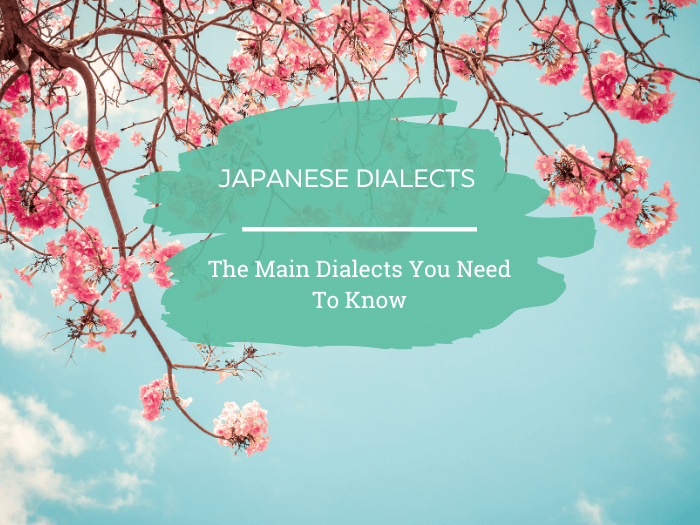One of the biggest challenges you’ll likely face as you progress in learning Japanese is actually understanding native Japanese speakers, especially when they use different dialects.
A lot of the struggle just comes from encountering unfamiliar words and structures. Or from feeling like your brain can’t keep up with how fast a person is speaking.
However, Japanese dialects are an additional factor that can definitely throw a wrench into some conversations.
Depending on how you are learning Japanese, where you are learning it, and for what purpose, you may not have encountered Japanese dialects before. Or you may already be using one of the unique dialects without even realising it!
In this post, you'll discover the differences between “standard” Japanese and some of the major Japanese dialects. Get ready to understand Japanese speakers better, no matter where they're from.
By the way, if you want to learn Japanese fast and have fun while doing it, my top recommendation is Japanese Uncovered which teaches you through StoryLearning®.
With Japanese Uncovered you’ll use my unique StoryLearning® method to learn Japanese naturally through story… not rules. It’s as fun as it is effective.
If you’re ready to get started, click here for a 7-day FREE trial.
Table of Contents
What Are Dialects?
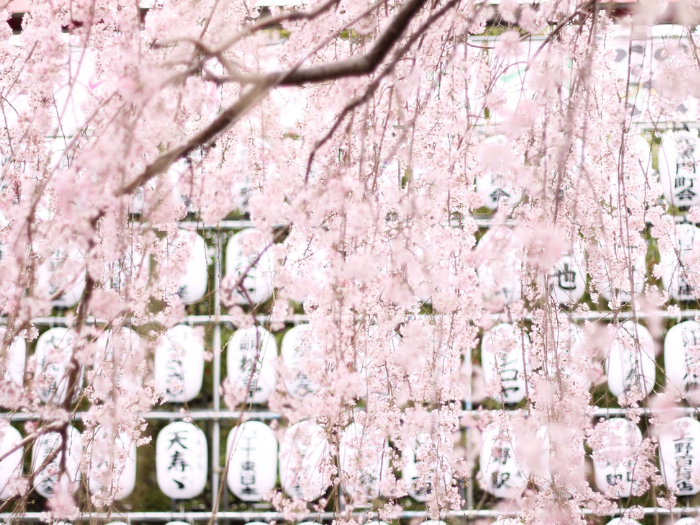
Dialects are varieties of language. They are not necessarily “informal” or fit a specific stereotype; rather, dialect is a word to describe different varieties of the same language.
Many dialects reflect a specific region of the country or the world, which is why you may have already encountered other dialects to your own depending upon where you currently live and what sort of Japanese you are studying.
Even standard Japanese is a dialect, although it is much more difficult to ascribe this particular form of speech to a certain area of the country.
Japan, like many countries, has a number of dialects spoken throughout the country. Actually, in comparison to many other countries, there are many different dialects of Japan.
These dialects impact not only how words are pronounced with a distinctive accent but even how sentences are structured in some cases.
Having a basic understanding of the most common dialects in Japanese will help you to understand more people more often so that you can level up your Japanese language skills.
Japanese Dialects vs. “Standard” Japanese
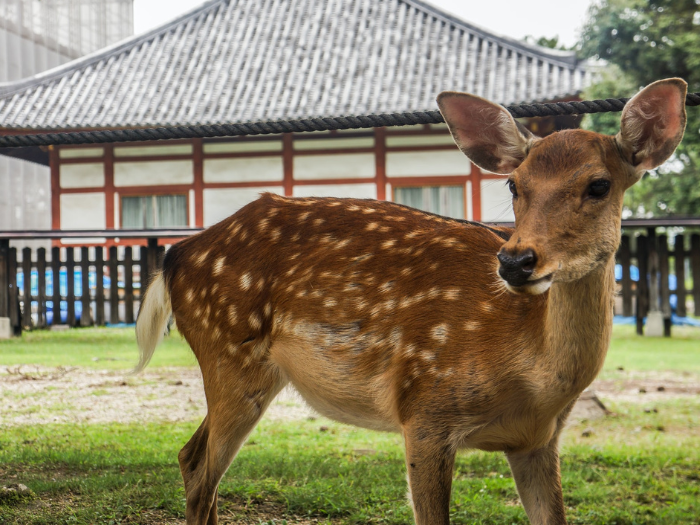
Before you start learning what makes Japan’s most famous dialects, well, famous, it’s important that you understand how dialects work compared to what might be considered “standard” Japanese.
Standard Japanese is the typical dialect you learn in Japanese language textbooks, and it’s what you will find being spoken on Japanese TV, in written correspondence from official sources, and for other formal business.
You can speak standard Japanese (often called 標準語 ,ひょうじゅんご, hyoujungo, which is “standard Japanese,” or 共通語, きょうつうご, kyoutsuugo, the “common language”), and most people will understand you easily.
The rise of standard Japanese was a result of the Japanese government attempting to create a common language following World War II. For this reason, speaking in regional dialects used to be heavily frowned upon.
Nowadays, it is much more widely accepted and embraced, so you will still find regional varieties of dialects used all throughout Japan.
While some remote locations will have dialects that are nearly unintelligible compared to standard modern Japanese, many dialects feature small quirks that make them easy to pick up and learn.
How Many Japanese Dialects Are There?
This isn't an easy question to answer, as many people claim there are as many dialects spoken in Japan as there are prefectures (regions of Japan). There are 47 prefectures in total which means there could easily be as many different Japanese dialects.
If you travel to each of the 47 official regions in Japan, maybe you can discover for yourself if there are really that many versions of the language!
Here are the 47 different prefectures in Japan, which are grouped into eight separate regions, in case you're interested:
- Region 1: Hokkaidō
- Hokkaidō
- Region 2: Tōhoku
- Aomori
- Iwate
- Miyagi
- Akita
- Yamagata
- Fukushima
- Region 3: Kantō
- Ibaraki
- Tochigi
- Gunma
- Saitama
- Chiba
- Tōkyō
- Kanagawa
- Region 4: Chūbu
- Niigata
- Toyama
- Ishikawa
- Fukui
- Yamanashi
- Nagano
- Gifu
- Shizuoka
- Aichi
- Region 5: Kansai
- Mie
- Shiga
- Kyōto
- Ōsaka
- Hyōgo
- Nara
- Wakayama
- Region 6: Chūgoku
- Tottori
- Shimane
- Okayama
- Hiroshima
- Yamaguchi
- Region 7: Shikoku
- Tokushima
- Kagawa
- Ehime
- Kōchi
- Region 8: Kyūshū
- Fukuoka
- Saga
- Nagasaki
- Kumamoto
- Ōita
- Miyazaki
- Kagoshima
- Okinawa
Why Are There So Many Japanese Dialects?
Different dialects are recorded in texts from the old Japanese era. You may be wondering why there are so many regional varieties in how the language is spoken. There are many theories about this, of which nobody is entirely certain.
One of the main reasons historians think so many different regional dialects developed is due to the lack of transportation around the country in the past.
People weren't easily able to meet with those from other regions, so they developed their own local way of communicating.
The standard Japanese dialect spoken in Tokyo wasn't easily transported across the country, so the further you got from the capital, the further away the dialect was from the language spoken in the Tokyo region. And so the dialects of Japan were born.
This lack of travel between regions meant people stuck to their own region and weren't influenced by different versions of the language spoken in other provinces.
Many speakers continued to communicate in their local dialect, even in the 19th century, when industrialisation and transportation around the country meant exposure to other versions of the language became easier.
The government tried to shame people who spoke regional versions of standard Japanese, with some schools even giving punishments to Japanese children who still spoke in dialects. This was especially prominent in the Tohoku and Okinawa regions.
Despite this attempt to stamp out regional differences in the language, people have held on to their traditions, local identity, and versions of the language. This is why you'll still find so many variations of standard Japanese around the country today.
By the way, if history and the origins of language is your thing, check out my post on Japanese language history.
Must-Know Japanese Dialects For Japanese Learners
The major Japanese dialects can generally be broken into two groups based on Eastern and Western geography; these are the Tokyo dialect and Osaka-Kyoto dialect.
This is based upon the regions of the country, with the Tokyo area being the eastern Japanese dialect and Osaka being the western Japanese dialect.
Even though Osaka-Kyoto is an overarching branch of dialects, each has its own unique features.
The dialects in Hachijō island and Kyushu are completely separate branches of Eastern and Western Japanese.
Then, in the south, the Ryukyan languages of the southern islands in the Kagoshima prefecture are a completely different branch of the Japonic family. These aren't considered dialects but separate languages.
All sound like a bit much to get your head around? Here's a basic map of where the different dialects are spoken. As you can see, the dialects are mainly split between Eastern Japanese and Western Japanese, with a few outlying regions that have their own dialects such as the Hokkaido dialect and Kyushu Japanese.
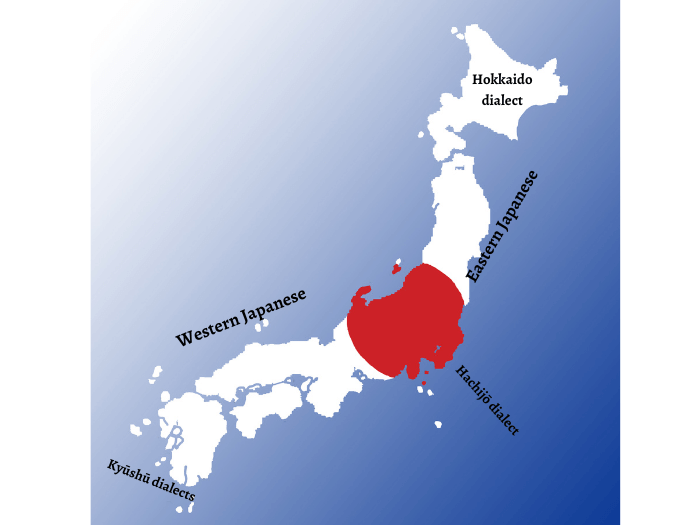
Let's take a look at the dialects you're most likely to encounter when having a conversation with a Japanese speaker.
#1 Osaka-Ben

Overall, the Osaka dialect (called Osaka-ben; ben is the term denoting dialects) is one of the most stereotypical dialects you might encounter.
Osaka-ben is part of a family of dialects more commonly referred to simply as Kansai-ben, or dialects from the Kansai region of Japan.
The Kansai dialects are notorious for dropping Japanese particles, so if you are speaking with someone who just doesn’t seem to be including particles in their speech, they may be from the Kansai region.
If you have already heard of Osaka-ben, it’s likely because you encountered one of its hallmark features: the use of -hen. Most Osaka-ben speakers will remove the -nai part of a word that makes it negative and replace it with -hen.
This is a simple thing you can do, too if you’d like to get started with Osaka-ben:
- Wakaranai > Wakarahen
- 分からない > 分からへん
- I don’t understand
- 分からない > 分からへん
- Nomanai > Nomahen
- 飲まない > 飲まへん
- I don’t drink
- 飲まない > 飲まへん
Other characteristics of Osaka-ben are a little less known, but they’re still relatively easy to implement. Try turning your sentence's final ne particle to na if you’d like to sound like you’re from Osaka.
- Atsui ne > Atsui na
- 暑いね > 暑いな
- It’s hot, isn’t it?
- 暑いね > 暑いな
- Hajimaru ne > Hajimaru na
- 始まるね > 始まるな
- It’s beginning, isn’t it?
- 始まるね > 始まるな
#2 Hakata-Ben
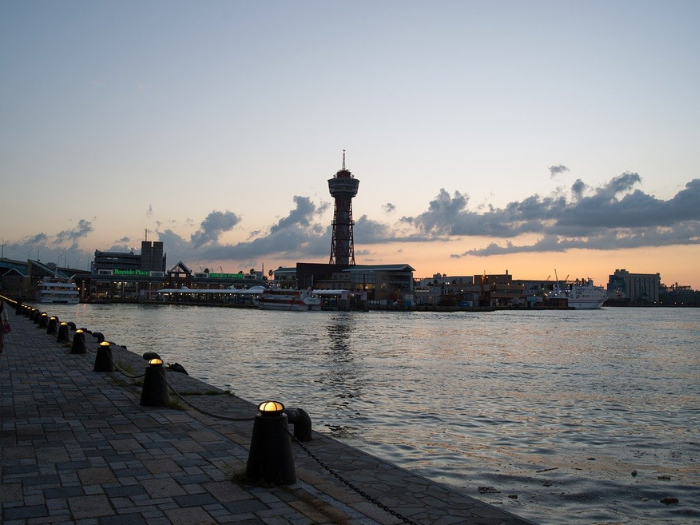
If you’re a bit further south than Osaka, you’ll likely start encroaching upon the area where Hakata-ben is used most often. Hakata is an area of Fukuoka, a large city on one of Japan’s southern islands.
Some of Hakata-ben remains iconic thanks to its presentation in anime and pop culture, so you may recognize one of the hallmarks of the Fukuoka-area dialect: the use of –n where –nai should be.
Hakata-ben is infamous for its shortened forms, and the use of these constructions is becoming more common than ever. Why? Because Hakata-ben is becoming a standard choice for spoken regional news.
You’re more likely than ever before to see a mixture of Hakata-ben and standard Japanese on television!
To create this iconic Hakata-ben form, take the –nai off of the negative form of your verb and just end the verb with –n instead.
- Wakaranai > Wakaran
- 分からない > 分からん
- I don’t understand
- 分からない > 分からん
- Shiranai > Shiran
- 知らない > 知らん
- I don’t know
- 知らない > 知らん
These two are likely some of the most common shortened Hakata-ben words that you might have already encountered. However, the principle applies to any verb you’d like!
You may also be familiar with the way in which Fukuoka residents change the endings of their adjectives. This is another simple option if you’re craving more Hakata-ben in your speaking.
In order to change your adjectives to Hakata-ben, replace the final –i with –ka instead.
- Osoi > Osoka
- 遅い > 遅か
- It’s late
- 遅い > 遅か
- Warui > Waruka
- 悪い > 悪か
- It’s bad
- 悪い > 悪か
#3 Nagoya-Ben
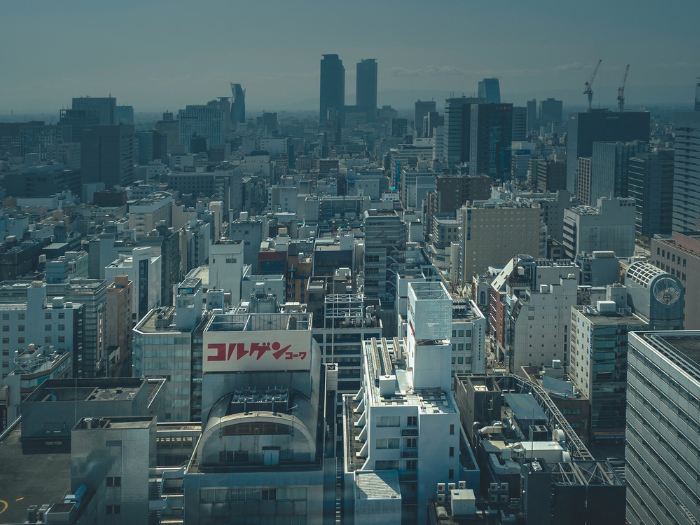
Closer to Tokyo sits Nagoya, some distance away from the southern cities like Fukuoka.
Here, the Japanese dialect more closely resembles the standard Japanese dialect you might find in business districts like those in Tokyo, but with some minor differences. Some listeners get the impression that people who use Nagoya-ben sort of sound like cats!
One of the most noticeable features of Nagoya-ben is similar to Osaka-ben’s -hen. (Say that five times fast!)
In other words, just as Osaka-ben ends its –nai words with –hen instead, Nagoya dialect does something similar. The only difference is that instead of –hen, Nagoya dialect speakers use –sen.
In order to create this construction, remove the –nai from your negative verb form and replace it with –sen instead.
- Kikanai > Kikasen
- 聞かない > 聞かせん
- I don’t hear [anything/I didn’t hear you]
- 聞かない > 聞かせん
- Nomanai > Nomasen
- 飲まない > 飲ません
- I don’t drink
- 飲まない > 飲ません
This is a common feature of Nagoya-ben, but it’s not what gets most people thinking that Nagoya dialect sounds like a cat. Instead, that comes from the altered endings Nagoya-ben speakers put on sentences, such as replacing the emphatic yo with ni.
- Tanoshikatta yo! > Tanoshikatta ni!
- 楽しかったよ > 楽しかったに
- It was fun!
- 楽しかったよ > 楽しかったに
- Samui yo! > Samui ni!
- 寒いよ > 寒いに
- It’s cold!
- 寒いよ > 寒いに
#4 Okinawa-Ben
Due to its more remote location, Okinawan Japanese is one of the more unique dialects you'll come across. As it's a popular region for travellers to visit in Japan, you may encounter it if you ever go to the country.
Okinawan Japanese uses about 70% of standard Japanese but a lot of the words from standard Japanese used in Okinawan have different meanings, so be careful!
Particles and demonstratives are different in Okinawan, for example in standard Japanese kara means “from” or “since” but in Okinawan it means “as” or “because”.
Okinawan also loans several words from English.
Here's a casual way to say “hi” in the Okinawan dialect:
- Haitai
- はいさい/はいたい
Japanese Dialects FAQ
How Many Japanese Dialects Are There?
Japan has dozens of dialects (方言, hōgen), varying by region. The exact number is debated, but linguists classify them into major groups, such as Kansai-ben, Tōhoku-ben, and Kyūshū-ben.
What Dialect Is Most Common In Japan?
Standard Japanese (標準語, Hyōjungo), based on the Tokyo dialect, is the most widely spoken and understood dialect.
It is used in media, education, and official communication across Japan.
What Are The Top 3 Japanese Languages?
Japan primarily speaks Japanese, but three major dialect groups dominate: Eastern Japanese (including Tokyo dialect), Western Japanese (including Kansai dialect), and Kyūshū dialects.
Additionally, Okinawan languages (Ryukyuan) are sometimes considered separate languages rather than dialects.
What Dialect Of Japanese Is Taught?
Japanese language courses teach Standard Japanese (標準語, Hyōjungo), which is based on the Tokyo dialect. This is the official form used in government, education, and business.
How To Use Japanese Dialects As A Learner

Now that you’ve dipped your toes in the waters of Japanese dialects, it might be tempting to come crashing into your next conversation using full-on Kansai-ben. While that temptation can be mighty strong, consider how you want to use dialects.
With most people who aren't very close friends, opting for standard Japanese, like what you’ve learned from textbooks and the news, is still going to be the best, most polite option. The last thing you want is for a Japanese person to feel like you’re mocking them.
That being said, there is a time and place for -ben. If you’ve made friends with a group of Japanese folks from a specific area, slipping a little of that dialect in from time to time can come across as charming and thoughtful rather than creepy and insulting. Moderation is key.
The good news is that dialects are a great way to practise your Japanese in a StoryLearning® way —which is the best way to learn! If you can create Japanese dialects, you’re well on the path to fully understanding and being able to manipulate the components of Japanese.
Keep at it, and use dialects as yet another tool to boost your Japanese learning!

Olly Richards
Creator of the StoryLearning® Method
Olly Richards is a renowned polyglot and language learning expert with over 15 years of experience teaching millions through his innovative StoryLearning® method. He is the creator of StoryLearning, one of the world's largest language learning blogs with 500,000+ monthly readers.
Olly has authored 30+ language learning books and courses, including the bestselling "Short Stories" series published by Teach Yourself.
When not developing new teaching methods, Richards practices what he preaches—he speaks 8 languages fluently and continues learning new ones through his own methodology.
